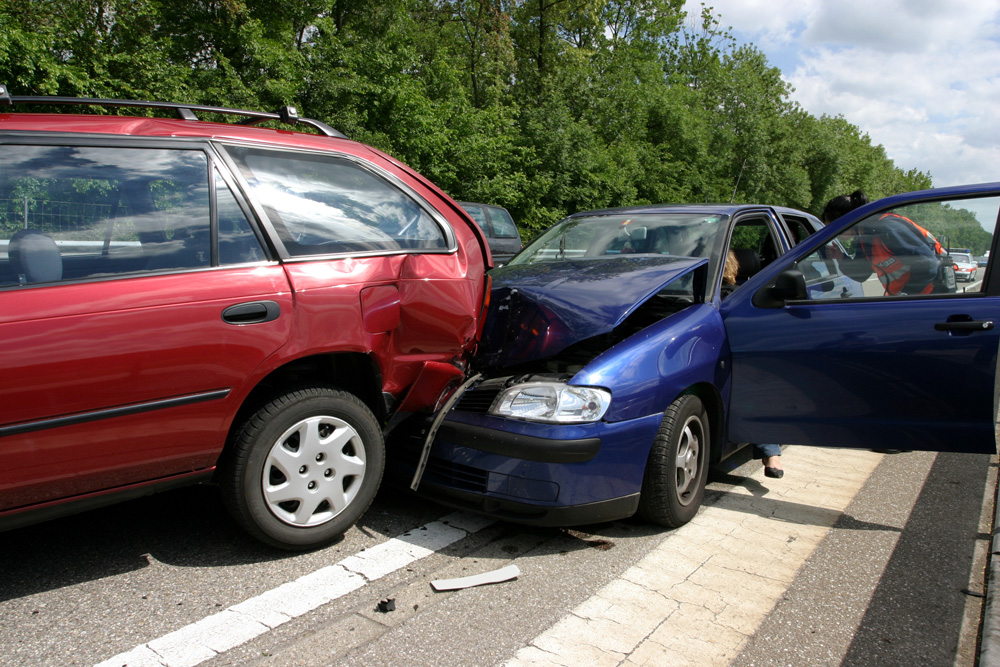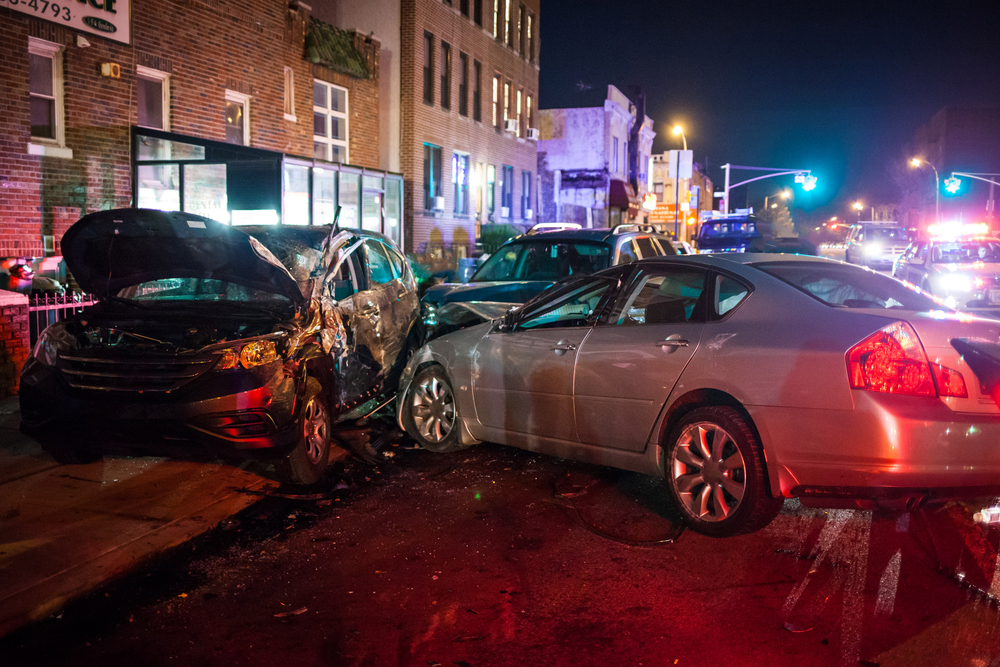Top Causes of Car Accidents
In 2020, 175,000 motor vehicle accidents occurred in Tennessee with 1147 deaths and 42,000 injured.
Davidson county and its 500,000 licensed drivers account for 18% of the injuries and 10% of Tennesseans’ deaths. Moreover, from 2016 to 2020 Nashville consistently ranks 1st in Tennessee in many traffic accident categories overall crash rate
- frequency of injuries
- accidents caused by speeding
- accidents involving young drivers (15-24)
- accidents involving senior drivers (65+)
Here are the most common causes of car accidents in Nashville:
1Distracted driving
Distracted driving killed 3142 people in the US in 2019. It’s the main cause of accident in both the City of Nashville and the state of Tennessee.
Any activity that diverts attention from driving is a distraction. This includes:
- Texting and cellphone usage: The most alarming distraction as it’s the most dangerous and becoming more and more frequent over the years.
Sending or reading a text takes the eyes off the road for 5 seconds. At 55 mph, that’s like driving the length of an entire football field, eyes closed. It also require one hand, at least, to perform, and drowns out a part of the brain essential to keeping a car in lane and rolling at safe speed.

- Rubbernecking and looking at anything else than the road: This is also a triple distraction: the eyes leave the road ahead, the head and body turning tends to cause the driver’s hand to pull the wheel in the other direction, and the mind wanders to the sight the driver is looking at.
- Auditory distractions: Music, noise, conversation with a passenger, phone calls impair the driver’s ability to focus on the road and may drown out the sounds of hazards outside the car.
- Manual tasks: Eating a meal while driving, looking in the vanity mirror, fiddling with the radio or navigating system, reaching for something on the floor, etc.All of those have visual, motor and mental effects that diverts the driver’s attention from the road, upcoming traffic lights, stopped vehicles or any other road hazard.
2Drowsy driving and fatigue
According to the CDC Americans suffer from chronic sleep deprivation. One third of us sleep less than the recommended 7 to 8 hours on a regular basis.
Drowsy driving is the same as drunk driving.
Sleepiness makes driver less attentive, slows reaction time, and affects driver’s ability to make decision.
It can result in crashes any time of the day or night, but 3 factors are most commonly associated with drowsy-driving crashes:
- It happens most frequently between midnight and 6 a.m., and in the late afternoon. At both times, drivers experience dips in their internal clock that regulates sleep (circadian rhythm).
- It often involves only a single driver without passenger running off the road at high speed with no evidence of braking.
- It happens on rural roads and highways as they’re more likely to be straight and monotonous.
Furthermore, some people are more likely to drive drowsy:
- Chronically sleep-deprived drivers.
- Commercial drivers (operating trucks, buses, tow-trucks, etc.)
- Long shift and night workers
- Drivers with untreated or undiagnosed sleep disorders (sleep apnea, narcolepsy, etc.)
- Drivers using medication that cause fatigue and drowsiness (anxiety, allergy, and blood pressure medications for instance)
3Speeding
Speeding kills. Over the last 20 years, speeding has been involved in one third of all motor vehicles fatalities in the US..
As for Davidson County, we’ve ranked first in accidents caused by speeding in all Tennessee, every year for the last 5 years.
Drivers speed:
- as a force of habit.
- because they’re late.
- simply for the thrill of it.
Speeding increases the chances of injuries and death in any accident:
- A speeding driver has less time to react to any hazard on the road.
- The vehicle needs a longer distance before full stop.
- The vehicle is harder to control in case of bad weather (heavy rain, snow, etc.) or poor road conditions (potholes, ice, etc.)
4Reckless driving
In Tennessee law, reckless driving is characterized by willful or wanton disregard for the safety of persons or property.
Disrespect for the rules of the road can take many forms:
- Aggressive driving and road rage: Unfortunately, anger is a common emotion when on the road. Drivers who let their rage overcome them by dangerous overtaking, failing to yield, ramming or sideswiping, for instance, put everybody at risk of serious injuries.
- Tailgating: Following another vehicle too closely, literally “riding up on its tail”, usually in an attempt of forcing the first driver to give way. It often causes the first motorist to get angry and break, resulting in a rear-end collision. At high speed, tailgating may have devastating consequences.

- Wrong-way driving: They usually involve high–speed head–on crashes and are more severe than other type of accidents with over 400 deaths each year in the US.
- Running red lights and stop signs: Those behavior present a high risk of wrongful death, especially at high speed, as they cause side-impact collisions and rollover accidents.
- Unsafe lane changes and failure to yield: Drivers who change lanes too quickly, without checking their mirrors and blind spot, often cause accidents, usually side-swipe collisions.
5Drunk driving
Alcohol reduces the function of the brain, impairs thinking, reasoning and muscle coordination. All these abilities are essential to operating a vehicle safely.
28 people in the US die in drunk driving crashes every day. That’s one person every 52 minutes.
In 2019, more than 10000 people died in the US from drunk driving.
Over the last decade, 70,000 alcohol-related crashes happened in Tennessee with 8000 in Davidson County.
6Drug usage
Many types of drugs, whether legal or illegal, can impair people’s driving skills.
They can :
- Alter perceptions and judgement (cannabis, psychedelics, ketamine, etc.)
- Induce drowsiness (opiates, cannabis, anxiety medication, etc.)
- Increase impulsive behaviors and risk-taking (cocaine, amphetamines, ice, etc.)
In 2017, the NHTSA reported that, out of police controls for drugs, drivers were tested positive for:
- Cannabis 38%.
- Depressants 29% (anxiety medication, GHB, etc.)
- Narcotic analgesics 28% (Oxycodone, codeine, heroin, etc.)
- Poly-drug use 37%.
Drug combinations, called poly-drug use, and combination with alcohol have disastrous consequences.
7Teenagers and inexperienced drivers
Car accidents are the leading cause of death for American teenagers who account for more than one third of teen wrongful deaths. The risk of auto accidents is higher among 16- to 19-year-old teenage drivers than among any other age group.
Per mile driven, teenage drivers are 4 times more likely to get into a car accident than older, more experienced drivers. They’re also more prone to reckless behaviors, texting, speeding, DUI and DWI.
In Tennessee, Nashville ranks first in crashes involving teenagers.
8Defective equipment
Human error is at play with car accidents more often than not. However, vehicles and parts sometimes fail drivers:
- Tire blowouts: Most highways are littered with the scattered remains of a tire blowout. They can cause motorists to lose control of their vehicle are even more dangerous for bigger vehicles like semi-trucks.
- Faulty brakes and steering malfunctions: As paramount parts of any vehicle, brake and steering failures may cause catastrophic accidents.
- Design defects: Automobiles have many parts and most of those can be defective, causing a crash. Many design defects became sadly famous over time, like Ford’s cruise control catching fire in the late 90s.
9Road hazards
Poor conditions and lack of maintenance to Tennessean roads are a big contributing factor in car accidents:
- Potholes: Drivers run the risk of losing control of their car or blowing out a tire when they drive over those bowl-shaped holes.
- Other maintenance defects: Missing or broken signage, missing or insufficient reflectors and paint lines, missing, broken or defective guardrails, loose gravel, etc.
- Poor road designs: Deadly curves, narrow bridges and roads, insufficient lighting, poor intersection planning, etc.
- Construction sites: They provide drivers with many hazards such as sharp turns, uneven pavement, lack of road markings, etc.
10Environmental hazards
Unfortunately, weather conditions and wild animals are out of anyone’s control:
- Rain: Water makes roads slicks and often causes automobiles to spin out of control or skid while braking.
- Ice and snow: Although Nashville gets only about 10 inches of snow every year, icy and snowy roads can cause the driver to lose tire traction therefore control. Even more than rain, snowfall makes for treacherous road conditions.
- Night time: Although 60% less drivers use the road, driving at night makes the risk of fatal crashes more than 40% higher. Sunrise and sunset make roads darker than the sky, impairing visibility. They are the most dangerous time period.
- Fog: Thick fog makes visibility extremely difficult, sometimes preventing motorists from seeing further than one car length in front of them.
- Animal crossings: Wild animals do not take driver’s education. They will unexpectedly cross roads, especially in rural areas. Not colliding with them is entirely up to the driver.
If you or a loved one was involved in a car accident that was caused by the negligence of another motorist, or car manufacturer defect you may be entitled to compensation. Contact our car accident attorneys at our Nashville or Lebanon office at (615) 444-2900.
